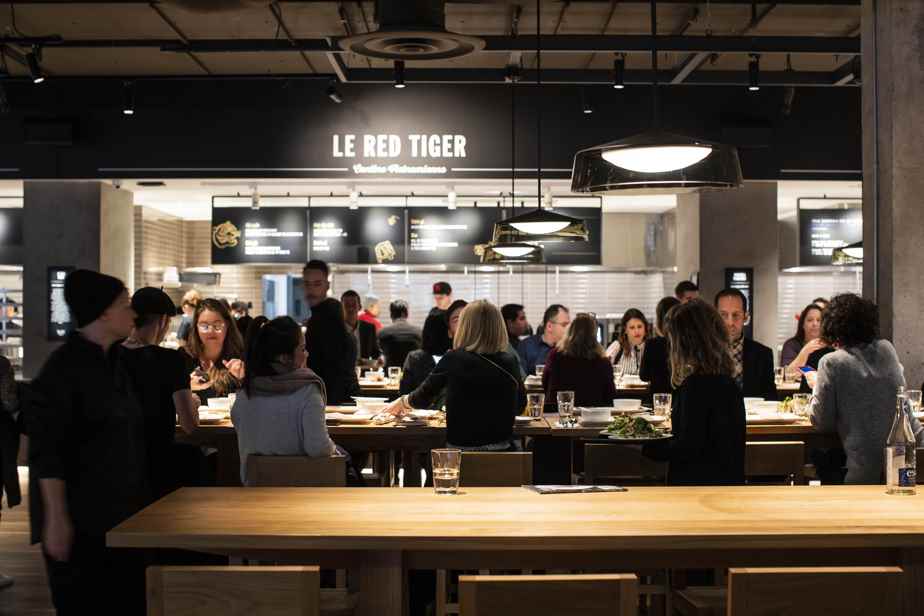(Toronto) Food courts in malls that must account for inflation and understaffing are at a crossroads in the aftermath of the pandemic.
The one in Brookfield Square in downtown Toronto is a good reflection of those difficult times. If a long line of shoppers are waiting to order outside McDonald’s or Jimmy The Greek, Starbuck and Market are closed.
Shopping center owners say traffic is up, although vacancy rates still remain high. People are gradually returning to work in downtown offices.
“There is no doubt that we are witnessing great changes”, underlines the vice-president of commercial property of JLL, Casdin Parr.
Andrew Brent, a spokesman for Brookffield Properties, the owner of Brookfield Place, is confident. “Trade show attendance and sales are steadily increasing and continuing to climb,” he says.
Growth largely depends on the return to the workplace of employees accustomed to working from home. However, the situation differs from place to place: some employees are back full-time, others have adopted a hybrid formula. The latter continue to work from home.
Optimism is not shared by all. After all, the vacancy rate in office buildings stood at 17.1% in the fourth quarter in the country, an increase of 0.7 percentage points compared to the second quarter, according to the real estate firm CBRE.
The situation varies greatly across the country. The vacancy rate reached more than 30% in Calgary, but “only” 9.8% in Vancouver and 11.2% in Ottawa. It was 16% in Montreal.
Alex Edmison, vice president at CBRE, finds that while food court patronage has dwindled, the drop in revenue hasn’t been as large as expected. However, sales have not yet matched the level reached before the pandemic.
And financial losses and dealership closures are putting financial pressure on commercial landlords and landlords.
“We have to be more competitive,” says Mr. Edmison. You have to try new things. You have to fight harder to get a share of the market. One way is to attract chains with strong local recognition as new tenants. For example, Mean Bao, Patties Express, Le Gourmand and KoHa Pacific Kitchen have been popping up at Toronto food courts.
Others want to transform this kind of restoration.
At the Bay Adelaide Center food court in Toronto, the usual “fast food” has given way to restaurants like Pumpernickel’s, which offers salads and sandwiches, or Zen Kyoto, which serves Asian dishes. And beautiful wooden tables and more comfortable black chairs have been installed.
Many owners look at this kind of space differently than in the past. There is still room for the traditional food fair. But increasingly they will offer an experience designed around the wants and needs of office workers.
Casdin Parr, Vice President of Commercial Property at JLL
Local restaurants offering dishes made with premium ingredients are at the heart of this strategy, he adds.
And the customers? Some are already bored with the “old days”.
“So many places I used to eat before COVID-19 have closed,” said Lina Tong, a Toronto finance worker. Today I’m ordering takeout. It is not like it used to be. Lunchtime is different when the places we used to go close. Good things cannot exist for life. »
